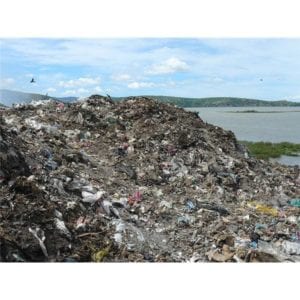According to a report by wasteplan.co.za, Sweden has achieved the ultimate fantasy in waste management, less than 1% of their waste goes to landfill. Using 32 waste-to-energy (WTE) plants that have been set up across the country to incinerate over two million tonnes of trash annually—almost 50% of the waste produced by the country. The plants run under capacity, resulting in Sweden importing waste from neighbouring countries such as England and Norway.
The Swedes do not produce comparatively less waste than other developed countries, however an intrenched culture of recycling and sorting waste contributes to their ability to manage their waste effectively. This is definitely something South Africa should aspire to. Everything that can be recycled is, and the waste is stripped of any scrap metal or other useful commodities. Anything that can’t be reused or recycled ends up at the WTE plants where it is used to generate energy. WTE plants contain huge incinerators for the trash. As it’s burnt, steam is produced that spins generator turbines which produce electricity. This is then transferred to transmission lines and distributed across the country and significantly reduces the country’s reliance on fossil fuels. While it may seem counter-intuitive to import waste, waste is quickly becoming recognised as a valuable commodity world-wide, and South Africa also exploits waste’s job-creation opportunities for the so-called “waste-preneurs”. Furthermore the environmental impact of the incinerators is far less than the effect landfills have. Landfills are still necessary because many products contain materials that cannot be recycled or incinerated. The ideal is creating a truly circular economy with zero waste, but we are still a long way off from this. Sweden is making good of a bad situation, and other countries will start to follow suit.WTE in South Africa
South Africa has WTE plants in eTekwikini and Ekhuruleni among others and it is atechnology that is fast gaining traction in the country, holding particular appeal in an erratic energy environment. According to a report by cityenergy.org.za, a growing number of projects are being proposed for South Africa under the label of ‘Waste to Energy’ where waste (such as anatomical hospital wastes, bio-hazardous wastes, electronic scrap, municipal/ domestic and industrial waste, worn out tyres, solvents, plastics and sludge) is burned instead of coal. About 70% of South Africa’s energy needs are met from coal (including over 92% of electricity generation and about 30% of transport fuels). According to a recent Environmental Impact Assessment Report into the feasibility of using waste, between 35 to 50% of coal can be replaced a year, depending on the composition of the waste. When you consider that this waste is either free, or that companies are paid to take it – then a central reason for burning waste for energy becomes clear – to make money. There is a possibility that companies will be paid to import waste into South Africa from countries that have more stringent standards on burning waste for energy than South Africa does. We have already seen companies importing materials regarded as waste in their country of origin (and thus attracting waste disposal fees) under the guise of recycling – since very small percentages of usable materials may be economically recoverable under local economic conditions and environmental regulation.







